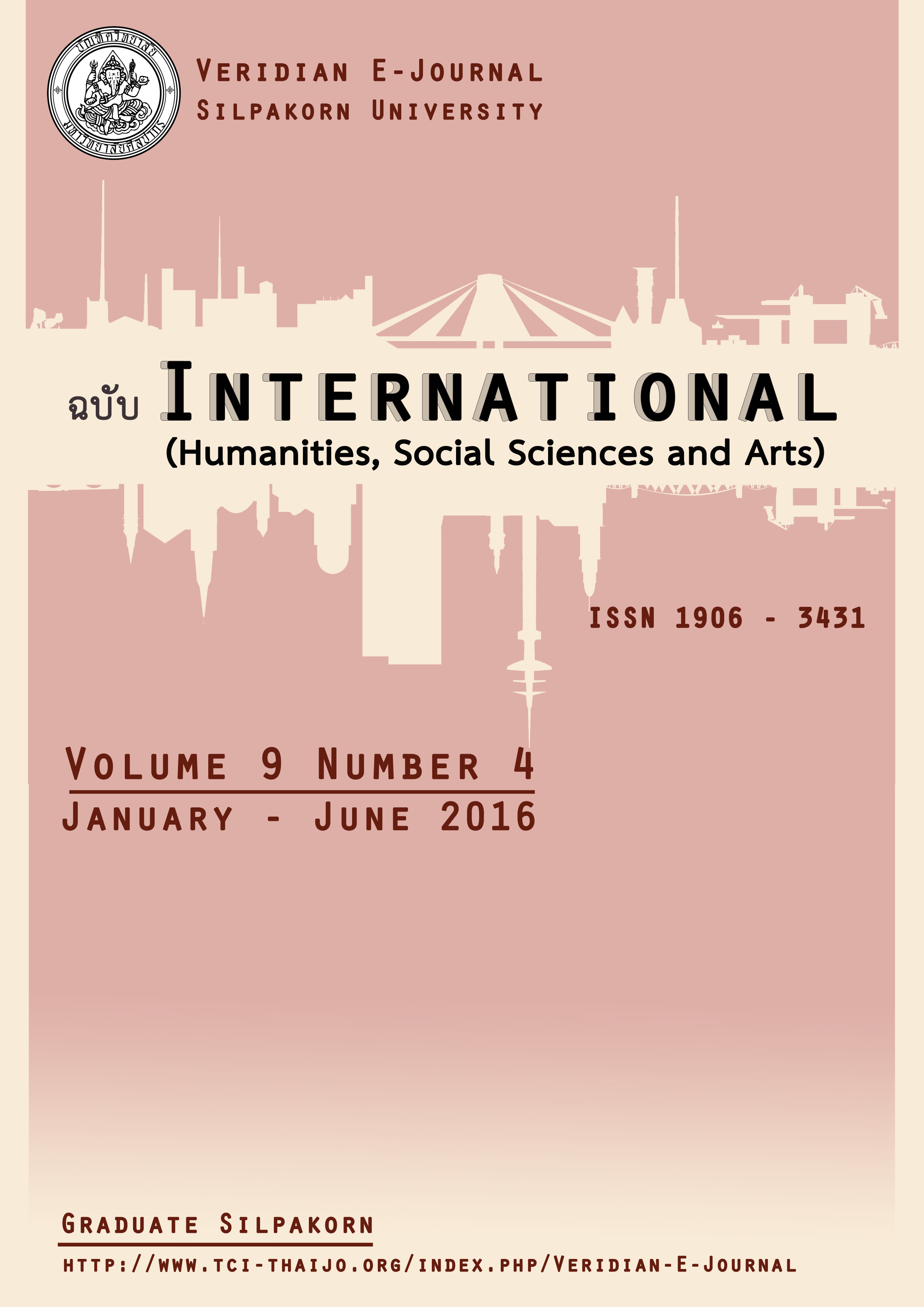Unconventional Photography: The exploration of cyanotype process on various fibers.
Main Article Content
Abstract
This article is a result of the exploration of a 19th century photographic process on unconventional materials. The beginning of photographic printing traced back to the 1800s. Images were printed with different light sensitive chemicals discovered by scientists and chemists. In that era, the photographs were done by hand from mixing the chemical, preparing the plates or paper to finishing with another set of chemical. In the early 20th century, the photographic printmaking became commercialized with silver gelatin. It became a mainstream throughout the century. After that, the evolution of the digital technology predominates the industry at the turn of the century. Consequently, the history of photography is overlooked and the historical processes are diminishing. They have become rare to the newer generations. Therefore, the objectives of this research are to preserve and reintroduce parts of historical photographic processes, to experiment historical processes on different fibers and to analyze the results. The process of this research is divided into three parts. First, the study of photography history and its processes and the study of fibers’ properties are carried out to obtain the appropriate processes and the applicable fibers for the experiment. Second part is the experiment of the selected photographic processes on various types of fibers. Third is to analyze the results from the second part. There were approximately 19 types of historical photographic processes. However, the selected processes are considered by relevant adhesive characteristic of the chemicals to the fibers. Natural fibers are found to have the right properties for the chemicals to be situated. Various types of natural fibers are experimented. The results find that fine cotton fiber is the best in giving richness of tonality and definition of the image. Each fiber gives a distinctive appearance and depth. The data analyzed can benefit those who seek alternative photographic processes and materials for their image making.
การวิจัยนี้เป็นการทดลองกรรมวิธีการอัดภาพของศตวรรษที่ 19ลงบนวัสดุที่แตกต่างจากที่ใช้ดั้งเดิม การถ่ายภาพและอัดภาพริเริ่มมาในช่วงปีคริสตศักราช1800 การอัดภาพเกิดขึ้นจากการค้นพบสารเคมีที่มีความ ไวต่อแสงโดยนักวิทยาศาสตร์ และนักเคมีศาสตร์ ในสมัยนั้นการอัดภาพทำได้โดยการผสมสารเคมี ทาลงบนวัสดุ หรือพื้นผิวที่จะอัดภาพลงไป และจบลงด้วยการล้างสารเคมีที่ไม่โดนแสงออก เป็นกระบวนการที่ทำด้วยมือทุก ขั้นตอน ต่อมาในช่วงต้นศตวรรษที่ 20 การอัดภาพได้พัฒนาเป็นธุรกิจ มีการจำหน่ายกระดาษอัดภาพสำเร็จรูป (Silver Gelatin) ซึ่งก็กลายเป็นกระแสหลักในการอัดภาพตลอดศตวรรษที่20 หลังจากนั้น วิวัฒนาการของการถ่ายภาพก็ได้เข้าสู่ระบบดิจิตอลในช่วงเปลี่ยนศตวรรษ ประวัติของการถ่ายภาพ และกรรมวิธีดั้งเดิมก็เริ่มที่จะหายไป กลายเป็นเรื่องที่เข้าถึงยากสำหรับคนรุ่นใหม่ วัตถุประสงค์ของการวิจัยครั้งนี้ ต้องการที่จะอนุรักษ์ และเผยแพร่ ส่วนหนึ่งของการอัดภาพที่อยู่ในประวัติศาสตร์ของการถ่ายภาพ จึงได้เลือกกรรมวิธีที่เหมาะสม นำมาทดลองลงบนพื้นผิวที่แตกต่างจากที่ใช้ดั้งเดิม ซึ่งส่วนใหญ่แล้วจะเป็นกระดาษโดยเฉพาะจาก ใยธรรมชาติ หลังจากนั้นก็ทำการบันทึกและวิเคราะห์ผลการทดลองเพื่อที่จะนำไปสร้างงานต่อไป การวิจัยครั้งนี้ได้ถูกแบ่งออก เป็น 3 ส่วน ส่วนแรกคือการศึกษาหาข้อมูลทางประวัติศาสตร์ของการถ่ายภาพ และเจาะลึกในส่วนของวิธีการอัดภาพต่างๆ และศึกษาใยธรรมชาติอื่นๆที่เกี่ยวข้อง และมีคุณสมบัติที่สามารถนำมาใช้อัดภาพได้ เช่นใยผ้า ชนิดต่างๆ ในส่วนที่สอง เป็นการทดลองกรรมวิธีที่เหมาะสมลงบนใยกระดาษ และใยผ้าต่างๆ ประมาณ 10 ชนิด ในส่วนที่สามคือบันทึกและวิเคราะห์ผลการทดลอง จากการศึกษา พบว่ากรรมวิธีการอัดภาพของศตวรรษที่ 19 มีอยู่ประมาณ 19 ชนิด อย่างไรก็ตาม กรรมวิธีที่ถูกเลือกมาทดลอง ได้พิจารณาจากการทำงานของสารเคมี ที่จะ สามารถนำมาใช้กับใยกระดาษหรือใยผ้า ซึ่งกรรมวิธีนั้นๆสารเคมี จะถูกซึมเข้าไปในใยกระดาษหรือใยผ้า การอัด

